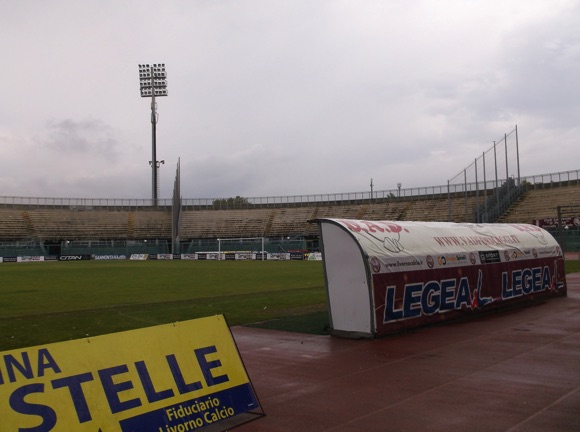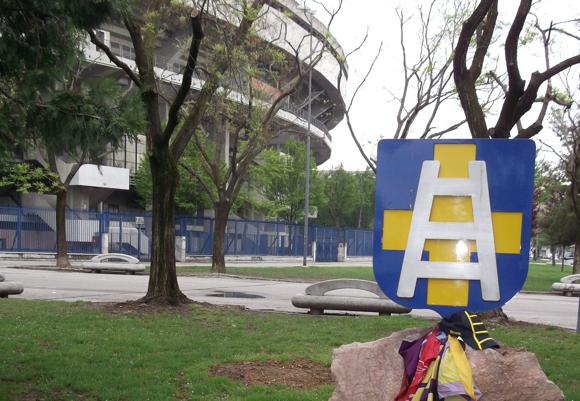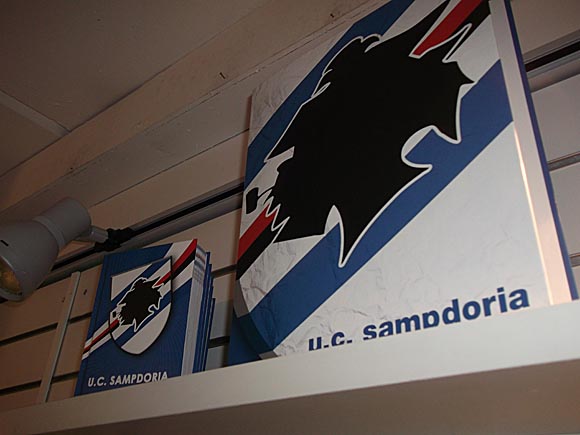A fan’s guide – the club from early doors to today
Celebrating their centenary in 2015, refounded in 2021, US Livorno 1915 are a small but proud club with the kind of passionate following usually associated with port cities. This following was out en masse in June 2013, transforming the Lungomare and piazza della Repubblica into a sea of maroon to celebrate the play-off victory over Empoli and promotion to Serie A.
Sadly, the joy only lasted one season – a year later, Livorno were back down again. For most of their 98-year history, in fact, Livorno have been in Serie B or C.
Formed as US Livorno from a merger of Virtus Juventesque and SPES Livorno in 1915, the Maroons (‘Gli Amaranto’) quickly struck up a historic rivalry with Pisa and made it through to the national final in 1920 thanks to goals from prolific young striker Mario Magnozzi. His brace in Bologna wasn’t enough to prevent a 3-2 Inter victory.

Later coach Magnozzi was the star of the pre-war era, before Teresio Piana topped the goalscoring charts in the 1940s, Livorno just missing out on the title to the great Torino side in 1943.
Gli Amaranto duly spent the post-war era in the second and third flights, despite the efforts of locally born defender Armando Picchi, later to win two European Cups with Inter. The club stadium, built in 1933, later took his name.
After more than 40 years of lower-league football, US Livorno went bust, and AS Livorno Calcio were set up in their place. Despite a number of play-off defeats, Livorno painfully climbed their way back up the Italian league pyramid through the 1990s.
Thanks to a late goal in Treviso from the prolific Igor Protti, promotion to Serie B was achieved in 2002. With first Roberto Donadoni as coach, then Walter Mazzari, and Protti still scoring hatfuls of goals, Livorno gained promotion to Serie A in only two seasons.

A sixth place in 2006 led to UEFA Cup qualification, a personal triumph for long-term club president Aldo Spinelli, who had come to Livorno in the late 1990s. Despite an initial narrow defeat at home to Rangers. Livorno won through to the first knock-out stage, and defeat to eventual finalists Espanyol.
After relegation in 2010, Spinelli set about engineering a return to Serie A, the key signing being Italo-Brazilian striker Paulinho. His play-off goals lifted Livorno back up to Serie A in 2013, a one-season stint that led to the forward’s departure for Qatar.
in 2019-20, with Spinelli long looking to offload the club, Livorno sank from Serie B to Serie C. A season later, the sale went through, and it was straight down to Serie D. A season later, out of the professional divisions, AS Livorno fell out of the professional divisions entirely and were dissolved.
It says a lot about the importance of football in Livorno that it was city mayor, Luca Salvetti, who persuaded former AC Prato president to found a new iteration of Gli Amaranto, US Livorno 1915, and enter the club in the very lowest Tuscan regional division.








Stadium Guide
The field of dreams – and the stands around it




Livorno’s modest, 19,000-capacity Stadio Armando Picchi looks like a classic municipal stadium of the Mussolini era – which is exactly what it is, even down to its original name, Edda Ciano Mussolini, after Il Duce’s daughter.
Livorno had mainly been playing in the grounds of the Villa Chayes (aka Villa Campari, today the Hotel Universal, in need of repair) further down the coast in Ardenza.
Though commissioned in 1932 and officially unveiled a year later, the new stadium by the Naval Academy still needed more work until it was ready for business in 1935. Mrs Mussolini came in person for the inauguration. Also later referred to as the Stadio Ardenza and, for a short period, the Yankee Stadium because of the American military parades held here, in 1990 the venue was renamed Armando Picchi after the Livorno-born Inter star.

Apart from the brief UEFA Cup campaign of 2006-07, the only international action the stadium has seen has been the three games it staged for the 1960 Rome Olympics – including a narrow win by Gérson-led Brazil over Great Britain, 4-3.
Comprising a running track, one main covered stand, an open facing stand and two ends, the arena even had, like its contemporaries in Bologna and Florence, a Marathon Tower, where the stadium announcer would sit, but it became unsafe and was knocked down in the 1980s.
Home fans gather in the Curva Nord and a section of the Curva Sud nearest the main stand, the Tribuna Coperta. The other half of the Curva Sud is allocated to visiting supporters, nearest the open stand, or Gradinata.
getting there
Going to the stadium – tips and timings

The regular bus 1 leaves from right outside the train station and takes about 25mins to reach the San Leopoldo stop (by the Hotel Gennarino), 5min walk from the stadium down via Randaccio. The club recommends Ardenza Mare, four stops down, but that’s a longer walk from the other end of the racecourse along via Dei Pensieri. Bagni Fiume is closer. To compensate, there are a couple of bars near the bus stop.
Less frequent bus 5 has a stop (V. Dei Pensieri Stadio) right by the stadium on Pensieri, departing from the Stazione Marittima via seafront piazza Mazzini.
getting in
Buying tickets – when, where, how and how much


Several shops and kiosks distribute Livorno tickets around town, including downtown Caffè Paradiso (via Maggi 113), the Chiosco Livorno in the Fonti del Corallo commercial centre behind the train station, the Toto Terzo at piazza Mazzini 81 and the Tabaccheria Cioni T at via Roma 133. There is also a ticket office tucked inside the main entrance under the Tribuna Centrale. You must have ID on you to purchase a ticket. The agency VivaTicket deals with online sales.
Prices are set around €5 for a place in the Curva Nord or Curva Sud, around €10 for the uncovered Gradinata stand, and €20 and above for the Tribuna Centrale, with cheaper tickets in the Laterale either side of the best seats.
what to buy
Shirts, kits, merchandise and gifts


The main outlet for Livorno merchandise is the Chiosco Livorno in the Fonti del Corallo commercial centre on viale Graziani behind the train station. Scarves, shirts and other souvenirs are also sold in the Edicola Libreria press and bookstore in the station itself.
In town, the Baldi Sport store on via Cairoli also carries merchandise.
Where to Drink
Pre-match beers for fans and casual visitors





In the main stand, the Bar Stadio Ale’ Livorno at pitch level is reason alone to visit, the history of the club illustrating around the walls, where Pelé, Gigi Riva and Platini also get a decorative look-in amid the dutifully labelled Amaranto line-ups down the decades. A few tables are arranged outside over the halfway line.
By the Ardenza Mare bus stop, the Pick Bar and L’Ostriciao face each other across the main coastal road, the latter a decent fish restaurant with a sea view.



























